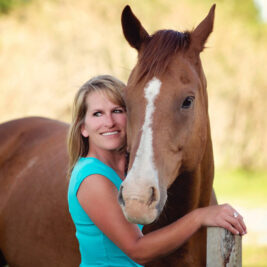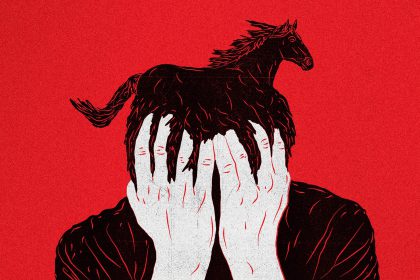In all the years of running courses for horse owners as a group, we care just as much about the horses as the owners and riders who join as students. We have always pushed the fact that you should listen to your horse and understand that horses cannot reason in the same way as humans.
Horses do not make decisions such as ‘I do not like working in the school, I am going to be really difficult with her if she makes me go in there today”. That is just not what happens.
We have always plugged in the courses the fact your horse’s behaviour is a reaction to something that has happend – either just now, recently or in the past.
It was with interest I read two articles in the new Concordia Equestrians mag today and both were so informative. I suggest you go look at the mag yoursefl – especially the article by Kate Fletcher – Let’s Ask Why? and a longer article from which we have pulled extracts here. Both are worth a read. Kate’s expecially Empathy with your horse
Extract from an article by Francesco Busignani in Concordia Equestrians Magazine.
Empathy is the ability to understand the state of mind of the other, whether it is joy or pain. It really means “feeling inside” or “putting yourself in the other person’s shoes” and this ability is not only part of the human being but also of the animal. From various studies it appears that empathy is not a learned behaviour that requires an intellectual effort but is already part of the genetic makeup of the species or of the individual himself.
Between two people or between two animals you often happen to observe this empathy, because within the same species it is easier to understand verbal language and above all non- verbal language, which allows us to put ourselves in the other’s shoes and really understand what we are wanting to communicate. When we are dealing with a species other than ours, it becomes a bit more complicated.
Empathy is the ability to understand the state of mind of the other, whether it is joy or pain.
It really means “feeling inside” or “putting yourself in the other person’s shoes” and this ability is not only part of the human being but also of the animal. From various studies it appears that empathy is not a learned behaviour that requires an intellectual effort but is already part of the genetic makeup of the species or of the individual himself.
Between two people or between two animals you often happen to observe this empathy, because within the same species it is easier to understand verbal language and above all nonverbal language, which allows us to put ourselves in the other’s shoes and really understand what we are wanting to communicate. When we are dealing with a species other than ours, it becomes a bit more complicated.
When there is harmony between horse and rider, in horse riding it is said that it is a good combination. But what is this binomial really? (a horse and rider combination is the ‘bionimal’ – a mathematical term!)
There are differences between horse and rider, starting with our basic needs which are different from those of the horse. Our way of communicating is different from that of our partner, and our way of doing is not always compatible. Since it is we who want to relate to our horse and understand how to communicate with them, it is up to us to try to learn his language and try to express ourselves so that he can understand us.
It is thought that it takes years to try to create harmony and collaboration between horse and human to form an intense bond, but this is only partly true as this type of synergy is normally made available immediately or almost, from the horse, but clearly the right conditions must exist for this to happen.
After years of a horse and rider being together they begin to read and understand each other’s habits and to solve every day problems.
To do all this you need to have a solid base of knowledge of horse language and ethology. Before going to ask the horse for practical and concrete exercises the important thing to do is to understand how he relates to me and what atitudes he shows to my requests. What can help me is certainly to understand the history of the horse but also what relationship it has towards the owner or whoever manages it every day. Sometimes the answers are already written in the attitudes of the rider but above all in those of the horse.
Knowing how to read both of them is a skill that develops with experience. For example, it often happens to have to deal with horses addicted to the requests of the rider – or on the other hand horses that are too nervous or quick to react to requests This is because most of the time the rider’s attitudes are reflected in the horse’s behaviour through empathy.
Very often it takes little to rebalance this relationship (little time for the horse and often a lot of time for the rider) unless the situations are really too deeprooted. But in any case it is the rider who must learn to communicate correctly with his horse by empathising with him, reading the various situations and thus managing to interpret them.
This does not mean that if we learn to adopt an adequate language the horse will immediately respond correctly to requests, but it is the attitude that is adopted at that moment for that particular horse and for that particular exercise that makes the communication effective.
It is we who must understand and interpret the horse (in our care) in a less technical and more instinctive way to really understand the needs of that horse at that moment. However (your) instinct will be good if educated by experience.
and the other article is from Kate Fletcher Msc LET’S ASK WHY?
Let’s talk about why we should always be asking ‘WHY?’ Every behaviour has a reason, a story, a justification. Every behaviour can be a way of communicating something and, very often, can be a cry for help. We should not see behaviour as a problem, but more as a message.
We, as the caretakers of domesticated equids, have the obligation and responsibility to ask why our horse is behaving in a certain way. This doesn’t involve just looking at ways in which we can push the behaviour down, cover it up or ‘fix it’ but to dig deep into the cause and evaluate what welfare needs
the horse is not having met, what emotions the situation is producing for them, what is the reason behind this behaviour, and what measures can be taken to help them.
It is understandable to think that skipping over the ‘why?’ and straight to the ‘well what can we do about
it?’ (or ‘how can we get rid of the problem?’) is the easier option in many ways. Longer-term, however, it
can create more ‘problems’, or more extreme behaviour, as the horse realises that the more subtle signs are just ignored.
Ignoring behaviour doesn’t make it go away, it might just make it less visible temporarily, but the cause has not been addressed so it is still there, under the surface, causing the horse more negative emotions and quite possibly worsening every day that we fail to peel off the lid and look at what’s going on there. To read the rest of the article go to https://concordiaequestrians.org/
Let’s all strive to be better equestrians and consequently better humans. Let’s always ask, ‘WHY?’



Receive latest news and industry insights straight to your inbox.